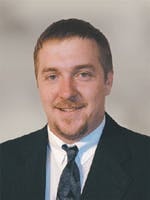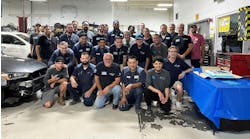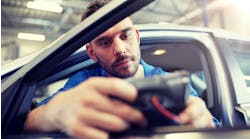John Loftus, who recently retired from his position as executive director of the Society of Collision Repair Specialists (SCRS), often said the only difference between collision repairers in Maine and Hawaii is that they wear short pants in Hawaii. His comment, clearly directed at those who believe the problems in their city or town are unique, is a delightful way to say that collision repairers throughout the United States share the same concerns and opportunities-no matter where they live.In this month's issue of ABRN, we hope to show you that you don't just share similarities with your brethren in the United States but that collision repairers across the globe share many of the same daily challenges regardless of national boundaries, languages or time zones. Our feature article, "A World Tour of the Collision Repair Industry," on page 36 provides an overview of the collision repair industry in several key markets in Europe, Asia and elsewhere around the globe.For the last three years, my wife has been stationed in Germany as a member of the U.S. Air Force. During these three years, I have spent a large portion of my time in Germany and have traveled extensively in both the United Kingdom and continental Europe. From first-hand experience, I can tell you that repairers in these markets share the same concerns U.S. repairers have for the future of their businesses. Such issues as the increasing percentage of work directed by insurers, labor rates that are slow to rise, technician shortages and crash parts are as much a part of the landscape in Europe and Asia as they are here in North America.While what occurs in the collision repair shop in Germany or the United Kingdom each day has little impact on repairers in the United States six hours later, move the time frame out six months and you may see an impact. Why? Global consolidation of insurance companies and suppliers to our industry provide these organizations with the ability to learn from the work they do around the globe. Products and procedures that work in Tokyo, Sydney, Berlin or London just may work in New York or Los Angeles. For a clear example, we need look no further than the growth of formal insurance referral programs in the United Kingdom.In the late 1980s, U.K. insurers began to implement formal DRPs that linked shops very closely to the insurers. The growth in the percentage of repair work directed by U.K. insurers to specific repair facilities was dramatic. Many independents suffered as a result. They found their market share shrinking and their profits declining if they failed to take on insurance referral contracts no matter what the terms. As repairers have faced downward pressure on profitability, investment in repair capacity has declined, as has the attractiveness of the industry to aspiring technicians. The number of shops has also declined.The growth of direct repair referral in the U.S. has followed suit and contains many similarities to the U.K. market. While the prospects for independent repairers in the United States are not as dire as they are in the United Kingdom, both repairers and insurers have looked toward the United Kingdom for valuable lessons concerning the impact of direct repair on the marketplace.Another area where the rest of the world leads the United States is in shop certification. Quality certification programs are fast becoming the norm for repairers in many countries outside the United States. We are just now beginning to see certification become a reality in North America with repairers in Canada. Witness the Boyd Group's certification efforts in Canada (See "Boyd Group Receives ISO Certification," News, March 2001). Quality certification will grow in the U.S. in the near future, and we have much to learn about its value from overseas.To take Loftus' comments one step further, the only difference between repairers in Hawaii and Germany is that in Germany they wear bright blue overalls.Finally, you may have noticed the news bit on our cover announcing that ABRN has been sold to Advanstar Communications Inc. Advanstar, a global business information company with offices around the globe, publishes 106 business and professional titles and operates 108 exhibitions and conferences and 79 Web sites.The addition of ABRN, coupled with our sister publications Motor Age and Automotive Marketing, to the Advanstar family creates a top-notch automotive aftermarket publishing group when combined with Advanstar's Aftermarket Business publication, which covers the automotive jobber and warehouse distributor markets.The sale will not affect the staff you have come to know in the pages of ABRN during the past few years, including myself, Angi Semler, Tina Grady, Lisa Greenberg and our publisher Terri McMenamin. We're all onboard and looking forward to the growth opportunities afforded the magazine by the new ownership. However, you can expect phone numbers and e-mail addresses to change in the next few weeks.




